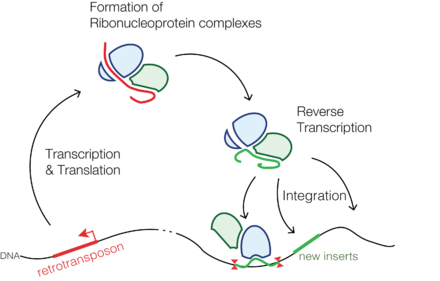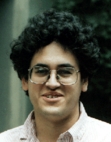John C. Baez's Blog, page 61
February 16, 2018
Applied Category Theory at NIST
I’m looking forward to this workshop organized by Spencer Breiner at the National Institute of Standards and Technology:
• Applied Category Theory: Bridging Theory & Practice, March 15–16, 2018, NIST, Gaithersburg, Maryland, USA.
It’s by invitation only, but it’s part of a movement I’m excited about, so I can’t resist mentioning its existence. Here’s the idea:
What: The Information Technology Laboratory at NIST is pleased to announce a workshop on Applied Category Theory to be held at NIST’...
February 10, 2018
Linguistics Using Category Theory

Now students in the Applied Category Theory 2018 school are reading about categories applied to linguistics. Read the blog article here for more:
• Jade Master and Cory Griffith, Linguistics using category theory, The n-Category Café, 6 February 2018.
This was written by my grad student Jade Master along with Cory Griffith, an undergrad at Stanford. Jade is currently working with me on the semantics of open Petri nets.
What’s the basic idea of this linguistics and category theory stuff?...
February 6, 2018
A Categorical Semantics for Causal Structure
guest post by Joseph Moeller and Dmitry Vagner
We begin the Applied Category Theory Seminar by discussing the paper A categorical semantics for causal structure by Aleks Kissinger and Sander Uijlen.
Compact closed categories have been used in categorical quantum mechanics to give a structure for talking about quantum processes. However, they prove insufficient to handle higher order processes, in other words, processes of processes. This paper offers a construction for a  -autonomous extension...
-autonomous extension...
February 3, 2018
Pyrofex
Mike Stay is applying category theory to computation at a new startup called Pyrofex. And this startup has now entered a deal with RChain.
But let me explain why I’m interested. I’m interested in applied category theory… but this is special.
Mike Stay came to work with me at U.C. Riverside after getting a master’s in computer science at the University of Auckland, where he worked with Cristian Calude on algorithmic randomness. For example:
• Cristian S. Calude and Michael A. Stay, From Heisen...
January 29, 2018
California’s “State of the State”
On January 25th, Jerry Brown, governor of California, gave his last annual State of the State speech. It’s about looking forward to the future: tackling hard problems now. I wish more politicians were focused on this.
You can see the whole speech annotated here. Here is the first part. The last line states the vision:
The bolder path is still our way forward. State of the State (first part)Good morning. As our Constitution requires, I’m here to report on the condition of our state.
Simpl...
January 21, 2018
Statebox: A Universal Language of Distributed Systems
guest post by Christian Williams
A short time ago, on the Croatian island of Zlarin, there gathered a band of bold individuals—rebels of academia and industry, whose everyday thoughts and actions challenge the separations of the modern world. They journeyed from all over to learn of the grand endeavor of another open mind, an expert functional programmer and creative hacktivist with significant mathematical knowledge: Jelle |yell-uh| Herold.
The Dutch computer scientist has devoted his life t...
January 14, 2018
Retrotransposons

This article is very interesting:
• Ed Yong, Brain cells share information with virus-like capsules, Atlantic, January 12, 2018.
Your brain needs a protein called Arc. If you have trouble making this protein, you’ll have trouble forming new memories. The neuroscientist Jason Shepherd noticed something weird:
He saw that these Arc proteins assemble into hollow, spherical shells that look uncannily like viruses. “When we looked at them, we thought: What are these things?” says Shepherd. They...
January 7, 2018
The Kepler Problem (Part 1)
Johannes Kepler loved geometry, so of course he was fascinated by Platonic solids. His early work Mysterium Cosmographicum, written in 1596, includes pictures showing how the 5 Platonic solids correspond to the 5 elements:

Five elements? Yes, besides earth, air, water and fire, he includes a fifth element that doesn’t feel the Earth’s gravitational pull: the ‘quintessence’, or ‘aether’, from which heavenly bodies are made.
In the same book he also tried to use the Platonic solids to expla...
December 30, 2017
Quantum Mechanics and the Dodecahedron
This is an expanded version of my G+ post, which was a watered-down version of Greg Egan’s G+ post and the comments on that. I’ll start out slow, and pick up speed as I go.
Quantum mechanics meets the dodecahedronIn quantum mechanics, the position of a particle is not a definite thing: it’s described by a ‘wavefunction’. This says how probable it is to find the particle at any location… but it also contains other information, like how probable it is to find the particle moving at any velocit...
December 27, 2017
The 600-Cell (Part 3)
There are still a few more things I want to say about the 600-cell. Last time I described the ‘compound of five 24-cells’. David Richter built a model of this, projected from 4 dimensions down to 3:

It’s nearly impossible to tell from this picture, but it’s five 24-cells inscribed in the 600-cell, with each vertex of the 600-cell being the vertex of just one of these five 24-cells. The trick for constructing it is to notice that the vertices of the 600-cell form a group sitting in the sp...
John C. Baez's Blog
- John C. Baez's profile
- 29 followers



